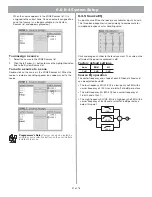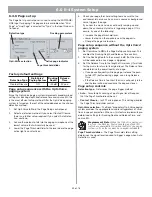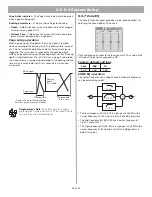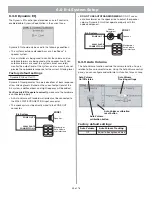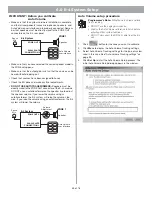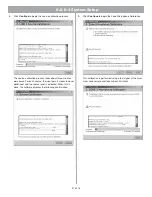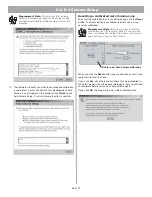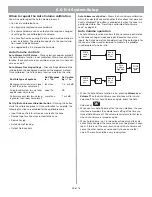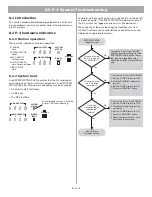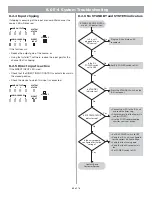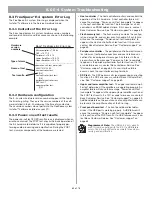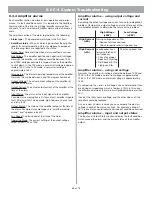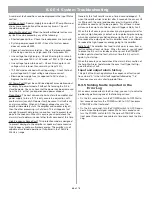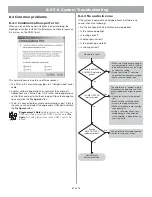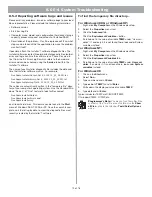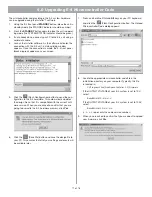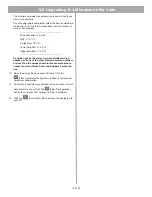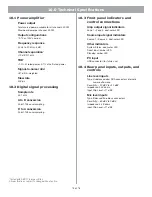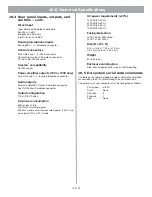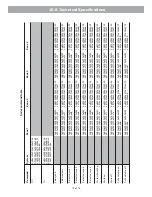
65 of 76
8.0 E-4 System Troubleshooting
8.3.4 Amplifier alarms
Each amplifier section monitors its own operation and perfor-
mance. If a fault condition occurs, it is reported in the Amplifier
Alarm section of the Error Log. Upper amplifier alarms affect
channels 1 and 2, and Lower amplifier alarms affect channels 3
and 4.
The amplifier section of the alarm log indicates the following:
•
Alarm type
– The generated alarm type is the first item.
•
Amplifier status
– When an alarm is generated, the amplifier
reports its current operating status for diagnostic purposes.
The following items are reported in the status:
Date & Time: Date and time when alarm condition occurred.
Rail Voltage: The amplifier positive and negative rail voltages.
Normally, the amplifier rail voltage should be between 100V
and 190V. Voltages outside this range will cause the amplifier
to shut down. In the 70V mode, a normal rail voltage is approx-
imately 125V. In the 100V mode, a normal rail voltage is
approximately 165V.
Temperature: The internal operating temperature of the amplifier.
Normally, this will be between 0 and 160 degrees Fahrenheit.
Output Voltage: The actual output voltage of the amplifier at
the time of the alarm.
Output Current: The actual output current of the amplifier at the
time of the alarm.
Input Status: The status of the input signal to the amplifier.
Possible status messages are DC sense fault, amplifier module
fault, AC power fault, sleep mode, high-frequency sense fault,
and retry fault.
Output Status: The status of the amplifier output at the time of
the alarm. Possible status messages are “amplifier module
muted,” and “speaker relay off.”
Fan Speed: The fan speed at the time of the alarm.
Operating Mode: The current setting of the output voltage
select switch, 70V or 100V.
Amplifier alarms – using output voltage and
current
Reviewing the output voltage and current can help to diagnose a
problem. Compare the output voltage and current for each of the
two amplifier outputs to determine the nature of the problem.
Amplifier alarms – using rail voltage
Normally, the amplifier rail voltage should be between 100V and
190V. In the 70V mode a normal rail voltage is approximately
125V. In the 100V mode a normal rail voltage is approximately
165V.
By comparing the + and – rail voltages, you can determine if you
are driving an impedance which is too low (<12
Ω
). In this case
the difference between the two rails will probably be greater than
20%.
If one of the rails shows a voltage, and the other does not, the
amplifier should be replaced.
As you review all alarm records you can compare the plus rail
voltage in each of the status sections. For example, a drop of
50% in one status could indicate a brownout condition occurred.
Amplifier alarms – input and output status
The Input and Output Status sections display the fault condition
which caused the alarm and the current status of the amplifier
output.
High Voltage
(>20V)
Low Voltage
(<20V)
High Current
(>2A)
Driving an impedance <12
Ω
•
Reduce total speaker load
•
Check for partial short of speaker line
High Current
(<1A)
Loudspeaker trans-
former saturation at
low frequency
• Check for proper
Speaker EQ setting
• Set Speaker EQ to
high-pass filter
Short on speaker line

